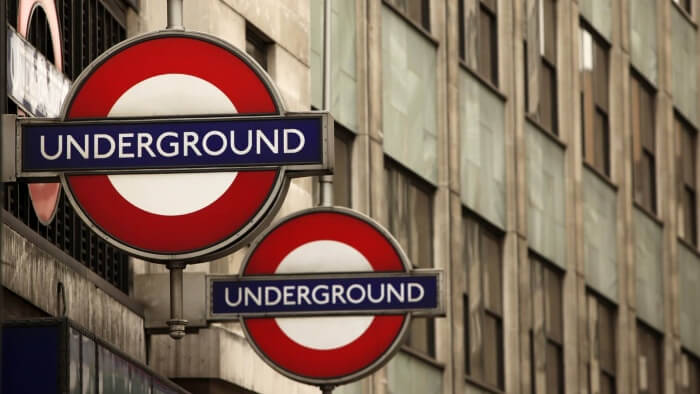Marketing professional specialising in business-to-business campaigns
View Author ProfileCommuting to work is a pain in anyone's language, but in London it can drive weary workers to distraction. Luckily, there are some cheeky tricks that just might lighten the burden of travel in the Capital's peak rush hour.
Guides
Squeezing the most out of the Tube
Commuting to work is a pain in anyone's language, but in London it can drive weary workers to distraction. Luckily, there are some cheeky tricks that just might lighten the burden of travel in the Capital's peak rush hour.

London’s population is increasing as steadily as its property prices, and certainly the former shows no sign of slowing. The City of London has the highest number of people commuting in England and Wales; in 2011 this area’s population swells from just 6,307 to 358,266 during the day. That’s 5,500%.
Westminster followed, with an increase of bodies from 175,505 to 644,065 during daytime working hours – and given the four years since the census, the numbers will inevitably have grown. In fact Westminster tops the rankings for the most desired office space in London. The logistics of getting this many people from one area of London into another, and then back again, like a giant algorithm, are mindboggling.
But behind the statistics, for every single person, is the reality of the commute. It forms a necessary and inescapable part of life, the bread around the filling of the working day. Sometimes, it can be harder than the working day itself, and certainly its costs shave off a significant portion of the day’s earnings.
The Tube – so called since 1890 – London’s iconic underground network, is the primary commuting vehicle, and there are things about it that might surprise you.
A slow burn: The average speed of the trains is only 20.5 miles per hour. With average car speeds around 9 miles per hour… the Tube wins hands-down. Cycling comes in kind of in the middle – but it is definitely cheaper. So on your bike you might get to work faster, more cheaply, and fitter.
The Battle of Waterloo: Waterloo is the busiest Tube station during the morning rush hour, with 57,000 people passing through – that’s almost as many people as the Emirates stadium holds. And at Waterloo it can take upwards of 15 minutes to navigate from the surface to the underground too.
A squeezed Tube? The shortest distance between two Tube stations is just 260 metres (0.16 miles), between Leicester Square and Covent Garden. The Piccadilly line takes carriagefuls of mainly tourists between the two spots, in under half a minute.
When does Underground mean underground? In fact, only about 45% of the Underground is actually underground.
Born where? In the Tube’s history, three babies have been born on the Tube, in 1928, 2008 and 2009.
The fact that the Underground is underground (well, kind of: see above) can skew our sense of its layout. Our imagining of it is further affected by the iconic London Underground map, designed by Harry Beck in 1939. The map’s layout appeals to order and aesthetics, and while it enables people to easily map how to get from A(ldgate) to B(ank), it can be misleading about how stations and lines actually interact with each other physically, as opposed to as colours on a pictogram.
There are tips and tricks that every commuter should know:
- Aldgate and Aldgate East are so close together that you can take either the Hammersmith and City line or the Metropolitan and Circle Lines.
- It can be easier to go to Bank and walk to Cannon Street/Monument/Mansion House. The four stations really are very close.
- The Victoria line can be swapped for the Northern Line – it’s usually quicker. Although swapping back and forth between lines can amount to more of a hassle than some people are prepared to undergo.
- If you check times and routes carefully, it can be worth going in the opposite direction for one stop, and changing on to a quicker line. This is the case, for example, if the Piccadilly Line is an option one station down the line – between Acton Town and Earl’s Court, while Victoria trumps Piccadilly in the Finsbury Park area.
- Get to know your station and transfer routes: don’t always follow the signs: they won’t always lead to the quickest route to where you want to go.
- Avoiding Zone 1 when travelling can cut costs – even some cross-London journeys can be made by Overground, saving on expensive Zone 1 routes.
While often too fiddly for tourists, it can be well worth commuters getting familiar with the ins and outs of their journey for the days when time is against you.
Find out which staircase can get you to the nearest station more quickly (see ‘Apps’ below), and where you should stand on the carriage for the quickest exit or transfer. There are helpful websites such as www.commutingexpert.com with tips and tricks to make the commute a little more palatable.
Apps
For both the long-serving commuter and just-arrived tourist, apps can be invaluable when travelling around London. There is a London Underground map available as an app, with a route planner version and a ‘live’ version with real-time information. Citymapper is a free map-app, with info on the cost of a journey as well as live info and route-planning features. A clever app called simply ‘Tube Exits’ helps get you at the right end of the train for the exit you need. Invaluable.
Apps for the cyclist include:
Bike Doctor: an app that can help you diagnose bike problems and provide repair advice.
Potholes can be at best inconvenient and at worst lethal for cyclists. Fill That Hole app allows you to report potholes you encounter to the relevant local authority.
For the feel-good factor: Green Commute, a free app, lets you measure your carbon footprint at those incriminating times of day.
For cyclists: a weather app might be useful too…
The Dubbledecker app for bus-riders will tell you when your next bus is nearly with you and whether you are near a bus stop.
Oyster cards
The conviction of the banker who swindled thousands through use of his Oyster card demonstrates that – whether you love or hate this Oyster – it’s necessary. It also makes sense. The contactless payment card gives reduced travel on the London network particularly for ‘to and fro’ journeys: bear in mind that a Travelcard might be better value for multiple journeys.
- Ensure the pay-as-you-go Oyster card always touches the machine at the beginning and end of the journey or else the maximum fare could be charged.
- Children under 5 ride free
- In theory at least, the £5 deposit for the Oyster card is refundable, as is any unused credit.
And if you fancy spending your day off on the Tube – try the ‘Tube Challenge’. There are challenges ranging from the Alphabet Challenge – visiting all stations in alphabetical order – to the Park Challenge (all stations with ‘park’ in the name). Challenges, and league tables, can be found at http://www.explorerticket.co.uk/tubechallenge.
Most read in Guides
Trending articles on Guides
Top articles on Minutehack
Thanks for signing up to Minutehack alerts.
Brilliant editorials heading your way soon.
Okay, Thanks!



